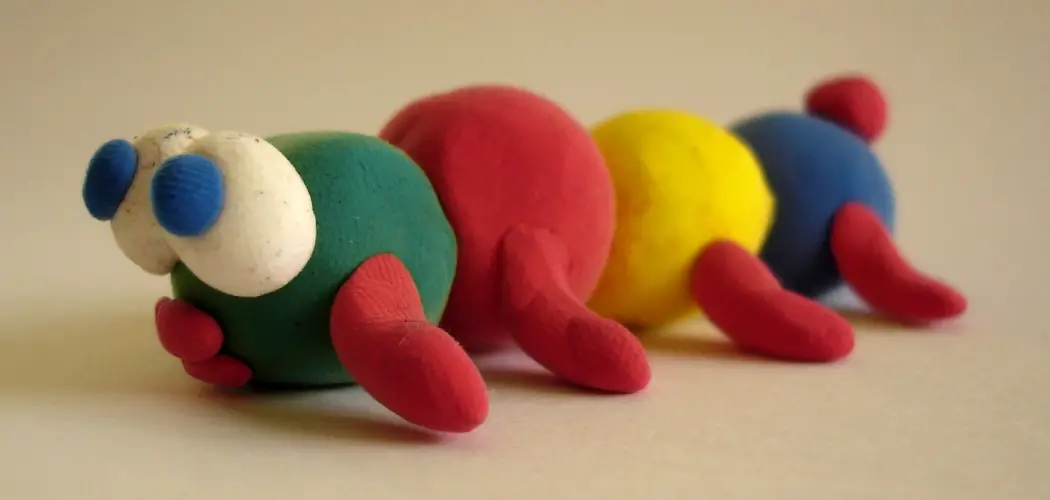Making animals out of playdough provides a fun and creative way for children and adults to express their imagination. Playdough is soft, malleable, and can be manipulated into different shapes. It’s also an inexpensive activity requiring little time or effort. Plus, it’s a great way to spend quality time with family or friends.
Making animals out of playdough can be a great activity for kids at home or school. It’s an easy way to introduce children to animal shapes and forms, and it provides a creative outlet that helps develop their hand-eye coordination and fine motor skills. In this blog post, You will learn how to make animals out of playdough.
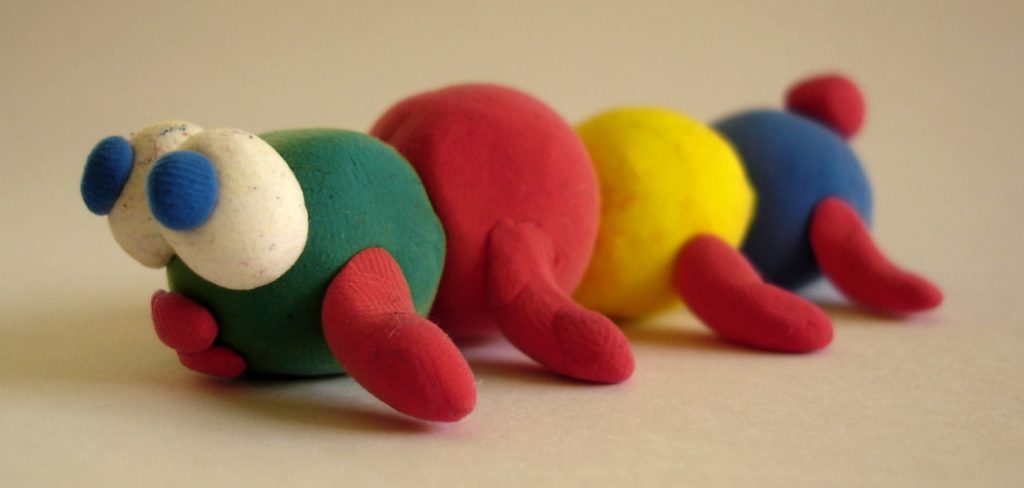
Step-by-step Instructions for How to Make Animals Out of Playdough
Step 1: Inspect the Playdough
Before you begin, it’s important to inspect the play dough and make sure it’s not expired or spoiled. If so, discard it and start over with a new set of playdough. Choose which animal you would like to make out of playdough. This could be anything from a dog to a cat or even an elephant. Make sure you choose one with enough details that make it easily recognizable.
Step 2: Gather the Appropriate Tools
Gather the appropriate tools for molding the playdough into your desired shape. This can include things like cookie cutters, sculpting tools, and small plastic figures, which can be used to create the individual pieces of your animal.
Step 3: Begin Molding the Playdough
Begin molding the playdough into your desired shape. Use cookie cutters and sculpting tools to help you form the various parts of your animal. If you’re using small plastic figures, place them onto the play dough to create the individual pieces of your animal.
Once you’ve finished molding all the individual components, it’s time to connect them and create your complete animal. Using a knife or some other sharp object, carefully cut away any extra playdough to ensure your pieces fit snugly together.
Step 4: Blend the Edges
Blend the edges of each piece to give your animal a more natural look. This can be done by rolling a pin over them to create smooth transitions between the pieces. Once you’re satisfied with the shape of your animal, it’s time to add some details. This could include facial features, fur patterns, and even claws or wings for birds.
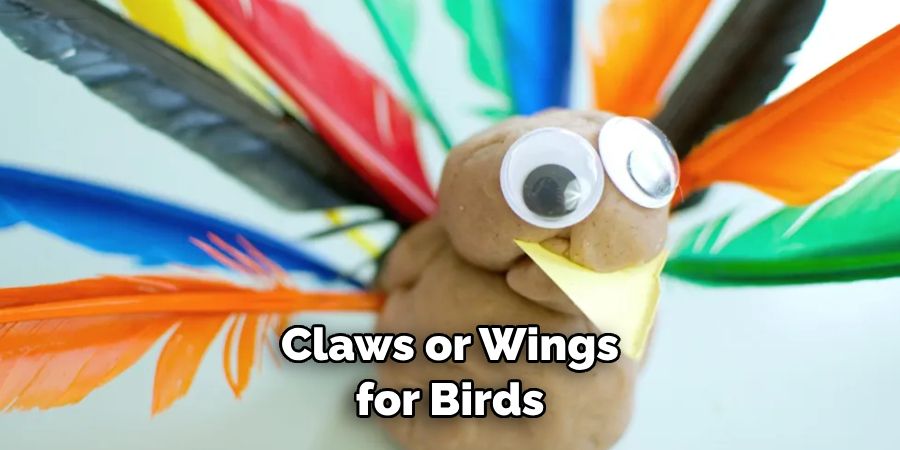
Step 5: Paint Your Animal
Once you’ve finished adding all the necessary details to your animal, it’s time to paint it. You can use acrylic or watercolor paints to give your animal a more realistic look. Let your animal air dry for at least 24 hours before proceeding to the next step. This will ensure the paint doesn’t smudge and has time to set properly.
Once your animal is dehydrated, it’s time to enjoy the fruits of your labor. Display your animal proudly and show it to your friends and family. Alternatively, you can use it as a teaching tool to help children learn more about different animals and their habits. With some imagination, you can make all sorts of amazing creations from play dough. Have fun and be creative.
Tips for How to Make Animals Out of Playdough
- Keep playdough away from small children who can accidentally swallow it, and supervise their playing with playdough.
- Avoid using food coloring as these can be dangerous if ingested. Instead, use non-toxic crayons or markers to color the animals for a more vibrant look!
- Clean up any spilled playdough as soon as possible to prevent bacteria from forming.
- Store playdough in an airtight container to preserve its freshness.
- Use soap and water to clean your hands after playing with play dough, or use gloves when handling the dough.
- Avoid eating or tasting playdough due to potential contaminants that may be present in the dough.
- Dispose of any leftover play dough if it begins to look discolored, stickier, or has an odd smell as this could indicate mold growth.

How Do You Store and Keep Your Playdough Animals in Good Condition?
- Sprinkle a thin layer of cornstarch on the surface to absorb excess moisture and keep the playdough from sticking together.
- Place your playdough animals in clear plastic bags and store them in a cool, dry place away from direct sunlight.
- Make sure your playdough animals are completely dried before putting them away. This will help prevent mold growth and preserve their color and shape.
- Use a clean cloth to wipe down any playdough animals that become sticky due to humidity or moisture in the air.
- Dust your playdough animals with cornstarch or talcum powder to keep them from sticking together when stored for long periods.
- If your playdough animals become too dry or brittle, you can use a few drops of vegetable oil to soften them and make them more malleable.
- Avoid excessive handling or playing with the playdough animals, as this can cause them to lose their shape or color over time.
What Are Some Unique Ways to Use Different Colors of Playdough for Making Animals?
Once you’ve mastered the basics of making animals from playdough, it’s time to explore more creative ways of using different colors and textures. One option is creating multi-colored animals by mixing different colored doughs. This allows various fun possibilities, like adding stripes or other patterns to your animal creations.
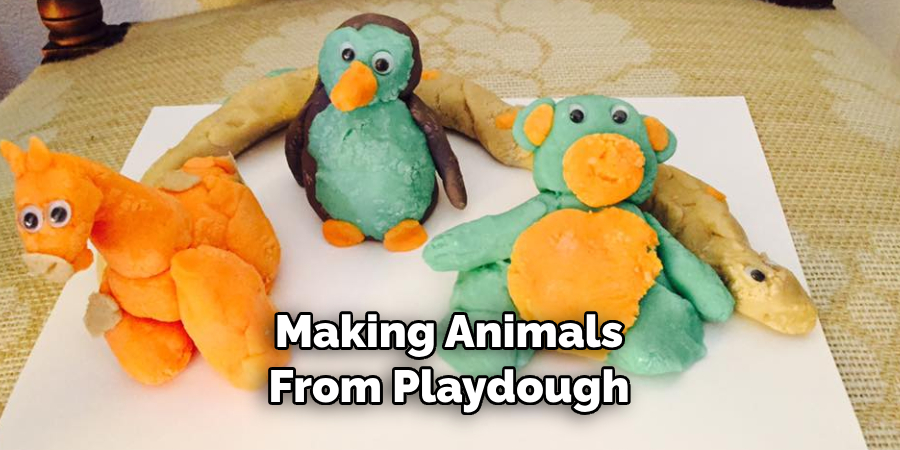
Another idea is to use different textures of playdough for each part of the animal. You can mix regular, sparkly, and textured dough for a truly unique piece of art. Finally, why not add some accessories to your animals? You could use pipe cleaners or buttons as eyes, horns, or even whiskers.
This will bring them to life and make them stand out. No matter how you choose to use the play dough, have fun with it! You can create any animal imaginable, so get creative and let your imagination run wild.
Is There Any Way to Preserve Your Animal Creations to Keep Them Looking New for Years to Come?
Yes. There are several options to ensure that your beloved creations stay looking new for years. One is to spray a sealant or lacquer on top of them. This will lock in the color and prevent it from fading with time. You can also store your animals in airtight containers.
Keeping them away from direct sunlight or other light sources will also help preserve their color. Finally, if you want a more permanent solution, try oven-baked playdough. This dough hardens when heated and will keep your animals looking good as new for years to come.
Is There Any Way to Make Your Animal Creations Look More Realistic?
Creating realistic-looking animals out of playdough can be daunting, but with a few simple tricks, you can easily make your creations lifelike. Here are some tips for making your animals look like the real deal:
- Choose colors that mimic those found in nature. Use browns, tans, and whites if you’re making a dog. If you’re making a cat, use grays and browns.
- Add texture to your animals with tools like toothpicks or skewers. Make fur patterns by poking small holes into the playdough or cutting thin strips for manes, tails, and whiskers.
- Give your animals features like eyes, noses, ears, and mouths with objects like beads or buttons. You can also use paintbrushes to add a finishing touch by adding color around the eyes and nose.
- Finally, use your imagination! Have fun with your animal creations, be bold, and experiment with different techniques to make them more realistic.
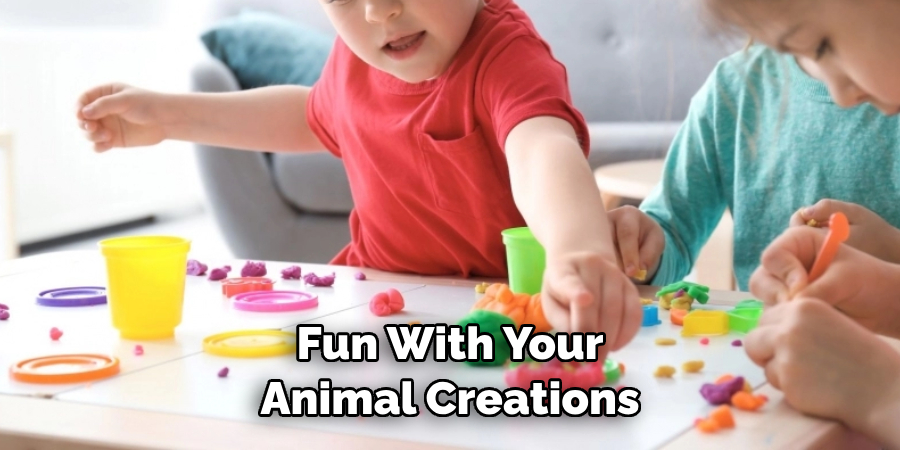
You can bring your playdough animals to life with some creativity and practice. Have fun creating, and remember to take pictures of your creations to show off your work.
Conclusion
Making realistic-looking animals out of playdough can be time-consuming, and it requires patience to achieve the desired results. Finding the right materials for creating facial features or patterns on fur can also be challenging. Additionally, some more intricate details may require specialist tools which can be pricey or hard to come by.
In conclusion, making realistic-looking animals out of playdough can be a fun and creative way to pass the time. You can create your life-like animal creations with a few simple tricks and techniques. Start by choosing colors that mimic those found in nature, add texture with tools like toothpicks or skewers, and give your animals features with objects such as beads or buttons.
This article has been beneficial for learning how to make animals out of playdough. Make Sure the preventive measures are followed chronologically.

